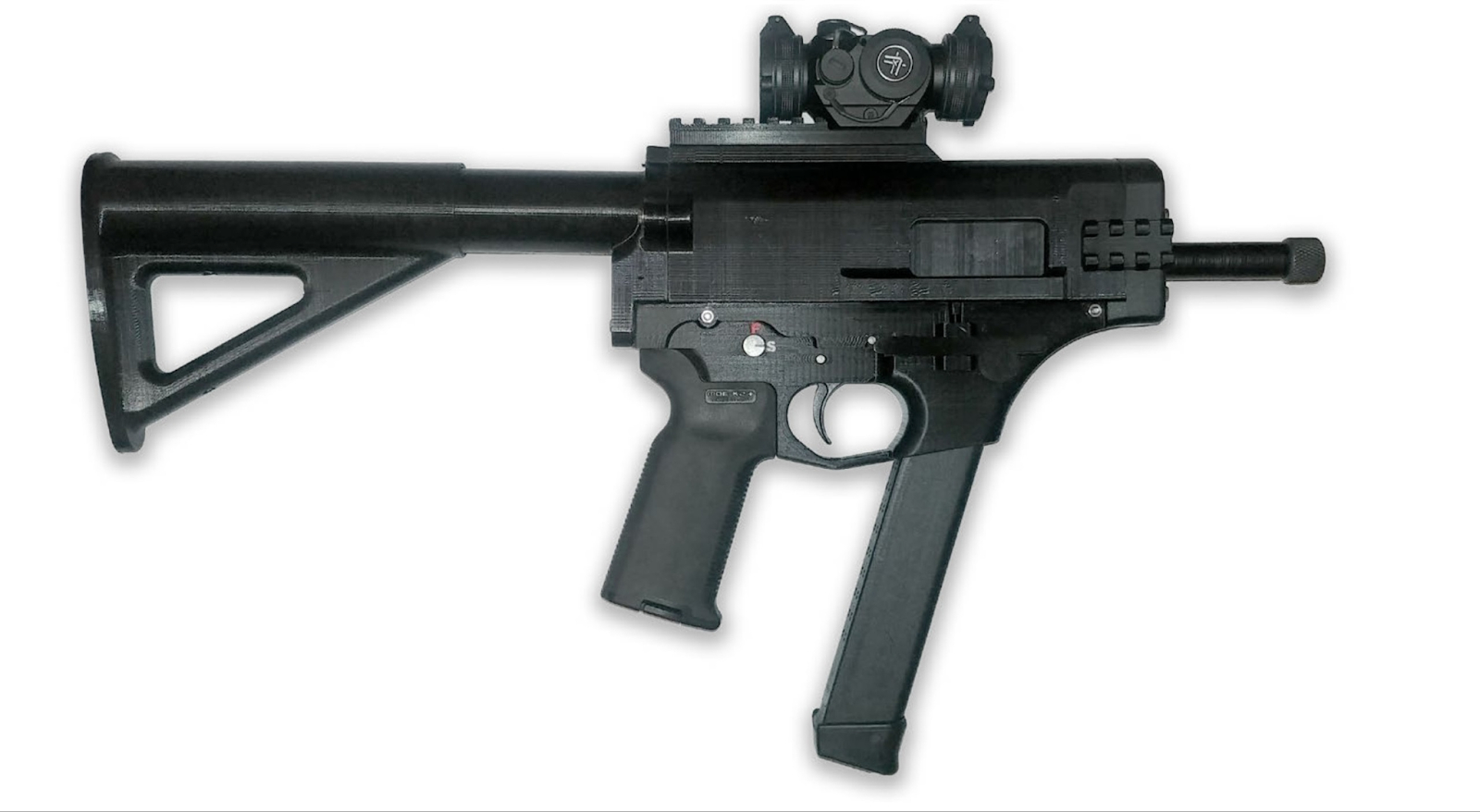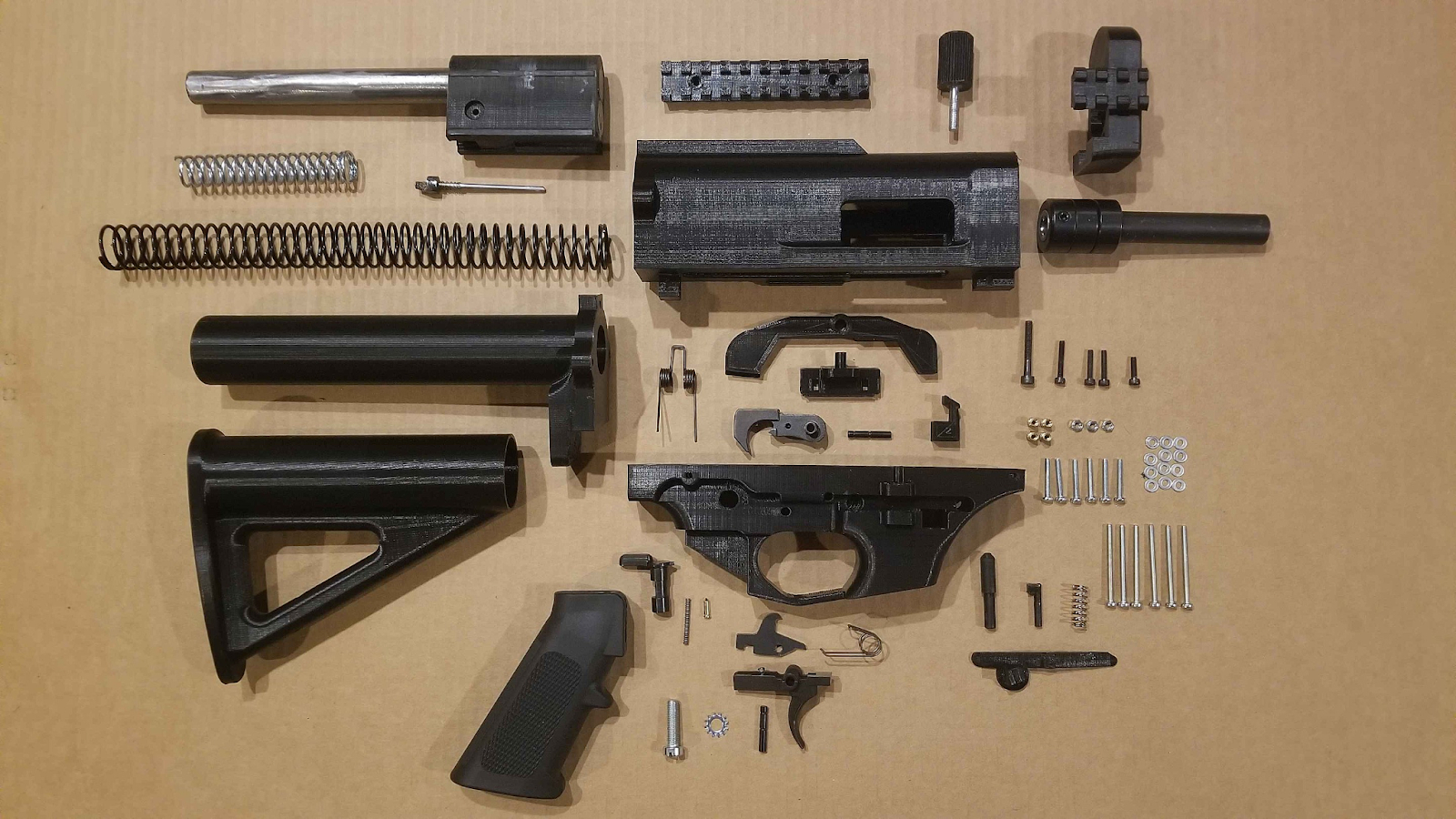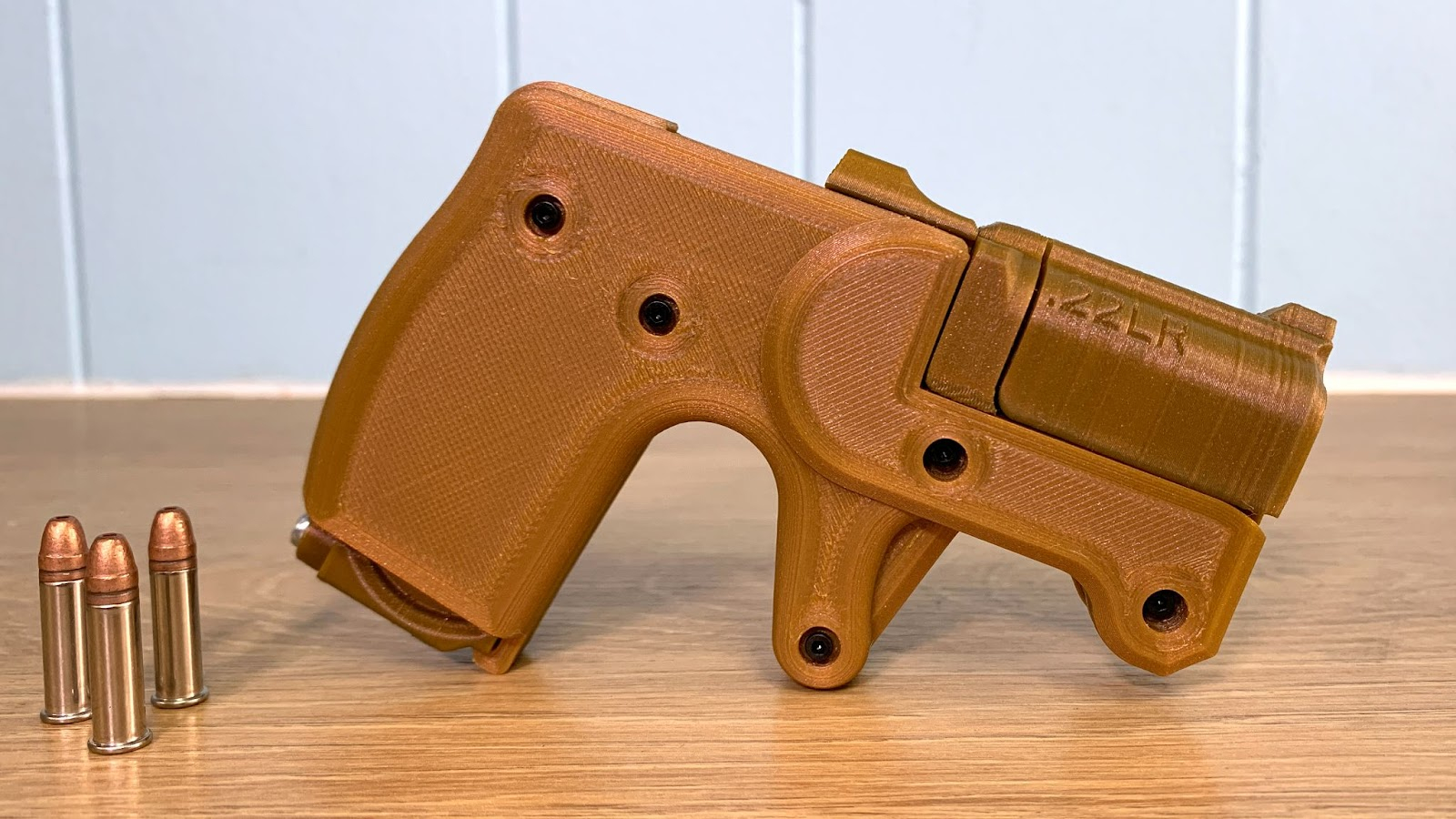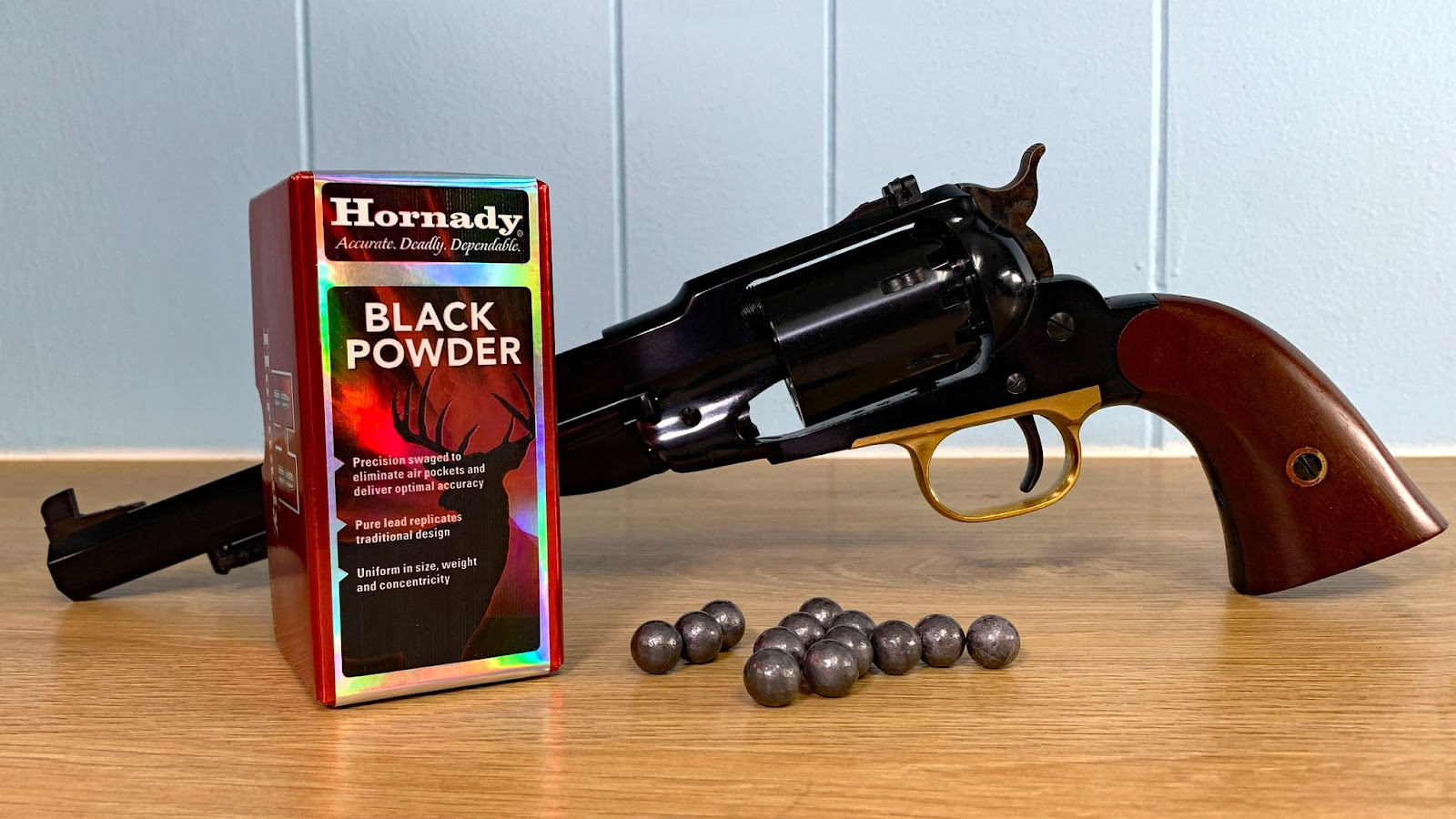I tried 3D printing a gun: It’s not as easy as you think
Most 3D-printed guns require metal parts you must buy elsewhere.

With America’s high rate of gun violence – 2021 saw the highest number of gun deaths in U.S. history – many lawmakers and activists have turned their concerns to the phenomenon of 3D-printed firearms. You can make a “ghost guns” at home with just about any 3D printer, and they don’t have serial numbers or registration.
In response to the perceived threat of guns that don’t go through any kind of manufacturer or dealer, politicians have proposed some radical laws. In September, California passed AB1089, which bans the sale of a 3D printer with the “sole or primary function of manufacturing firearms.” In New York, Assembly Bill A8132, which is still in committee, would require anyone in the state to undergo a criminal background check before buying a 3D printer (of any kind).
So just how easy is it to 3D print a gun at home, using a garden-variety FDM 3D printer (the most common type)? To find out, I attempted to 3D print a 3D in my home in Missouri (where it’s not illegal) and found out that, even for an experienced maker like me, creating a working firearm is a challenge, one that requires you to purchase several metal parts (3D printing metal is incredibly expensive and out of reach for most people). People who want inexpensive or untraceable guns have simpler options, at least in the United States.
A Brief History of 3D-Printed Guns

The first 3D-printed gun was fired long before Creality invented the Ender 3, and was in fact printed on a Stratasys Dimension SST in 2013 by Cody Wilson, a former law student and self-proclaimed crypto-anarchist. Dubbed the Liberator and printed in ABS plastic, this model was more an exercise in civil liberty than a practical firearm. According to the Victoria and Albert Museum in London, which now owns the first Liberator, Wilson created the gun as a political act.
Wilson invited the media to watch him fire the weapon on a private range in Texas – it exploded on the third attempt – then he promptly released the files on the internet. The US Government shut it down, but not until after 100,000 worldwide downloads.
It’s worth noting that Wilson had to buy the Stratasys second-hand off eBay for $8000. He originally leased a machine from Stratasys, but after the company discovered his intent, they sent a team to seize the printer.
Guns made completely of plastic are not very practical (not to mention illegal in the US) and might be more dangerous to the user than any unfortunate soul on the wrong end of the barrel. While doing my research, I couldn’t find any guns that were entirely 3D printed, other than the Liberator, which can only last a few rounds before needing the barrel replaced.
Get Tom's Hardware's best news and in-depth reviews, straight to your inbox.
Hybrid 3D Printed Guns

Sean Aranda, known online as the 3D Print General, told me that most home gun makers opt for a hybrid build, combining 3D printed parts and metal.
“Mostly 3D printed guns, over time, have proven very unreliable, though there are new projects to improve this,” he told me.
Aranda is a content creator and author fighting to get his YouTube channel back – he was booted from the platform for community violations regarding his gun videos. His videos are currently hosted on Odysee and his book, 3D Printing Failures: How to Diagnose and Repair all Desktop 3D Printing Issues, is an Amazon bestseller. PolyMaker also features his logo on a spool of khaki PLA.
A series of videos detailing his experience building the FGC-9 gun show the difficulty in printing a complex weapon. It took several tries, with a faulty metal barrel that caused jams and PLA parts that melted in the Texas sun.
“The vast majority of people suggest printing in PLA+ or PLA Pro because it’s cheap, easy to print and strong enough for nearly all 3D printed gun applications,” Aranda noted. However, after some trial and error, he switched to printing in more durable ASA and ABS. “The new go-to seems to be carbon fiber nylon blends because they are strong, heat-resistant and print great. It’s just not cheap,” he said.

The FGC-9, a semi-automatic pistol, is a hybrid gun that costs less than $400 to build with parts purchased from a store. The name means F**k Gun Control, and it was invented by German gun enthusiast Jacob Duygu, who used the online handle JStark1809 while he remained anonymous. Sky News recently unveiled the masked gunsmith as a former member of the German military who died of unknown causes after being released from police custody in 2021.
A website called Parts Dispensed is one of several online stores that sells metal parts kits (or individual parts) for the FGC-9. You can configure your kit with a barrel, a fire control kit, magazine, a firing ping and a bolt. When we selected all the parts together at press time, the cost was $302.
If you wanted to be more DIY, you could buy and modify non-purpose-built hardware such as springs and metal tubes. But you’d likely need a CNC machine and significant machining experience to make that happen.
According to FGCKits.com, another site that sells kits for the FGC (but without barrels), “without a machined parts kit, building an FGC-9 requires significant metalwork and welding out of the reach of many urban dwellers.“

Watching Aranda’s video showing his build process for the FGC-9 MK2, it’s clear that even with a kit, there’s a ton of work involved. In the video, you see Aranda printing numerous parts, sanding them and doing a lot of manual labor to get his kit parts and other parts he bought installed. You’d need real time, commitment and building skills to make this happen.
Where Do You Find Files for 3D Printed Guns?

You don’t have to lurk on the “dark web” to find information on making 3D-printed firearms. A quick search on Google presents you with several websites on the subject, including a few that have free files. CTRL+Pew and 3D Gun Builder believe in the freedom of information and make files available without charge. Both have guides for those new to 3D printing on buying a budget printer and making it work.
The biggest file-sharing site is a little more mercenary. Cody Wilson’s DEFCAD charges a membership fee, partially to aid in restricting files to US Citizens, but also to fund his constant battle with the American government and its attempts to squash 3D-printed guns.
Popular 3D printing file-sharing sites, like Thingiverse, Thangs and Printables, do not allow files for functional guns on their servers. And no wonder, as many countries around the globe tightly regulate any sort of gun ownership, and a growing number of US states, including Delaware, Hawaii, New Jersey, Oregon and Rhode Island, specifically prohibit 3D printing guns. Connecticut, Massachusetts, New York, and Virginia ban guns made of plastic, according to EverytownResearch.org, a non-profit that advocates for gun control.
Though Americans are granted the right to bear arms by the Second Amendment, sharing computer files for guns is a legal hot potato. These files first fell under the jurisdiction of the International Traffic in Arms Regulations (ITAR) and now are under the watchful eye of the Bureau of Industry and Security (BIS). Essentially, it is illegal to export 3D-printed gun files without a license from the BIS.
My 3D-Printed Gun: No Good Without a Kit

I wanted to see if it was really that easy to print a gun for free, so I searched for the Liberator’s files. The only ones I could find were behind DEFCAD’s paywall. So I decided to print a .22 Harlot instead.
3D Gun Builder called it “a fun pea shooter for the range.” The site recommended using a budget Ender 3 V2 or Prusa MK3S+, along with Inland PLA for prototyping and Polymaker PLA Pro for finished builds. I wasn’t planning on taking this past the prototype stage, so I loaded Polymaker Starlight Neptune, one of the best filaments, into my newest budget printer, the Ender 3 V3 SE.
As it turns out, the Harlot wasn’t that easy to make. The parts didn’t fit well without sanding or drastically reducing the flow on my budget Ender. Assembly directions were also difficult to find, as YouTube took down the original video for community violations. I did find a long form, wordless vertical video set to techno music that showed how to assemble the Harlot – though it used files that weren’t identical to the latest version I had printed.
The Harlot is not 100% 3D printed. 3D Gun Builder linked to a gun shop in Wisconsin that sells an $80 parts kit (currently out of stock) with screws, nuts, a spring and the most important part: a metal barrel liner. Ghost Guns.com also has a Harlot Parts kit that it’s selling for just $22, but I didn’t buy one.
I put the Harlot together with spare screws from my workshop and a spring I picked up at Harbor Freight. It’s missing the metal tube, so I asked Aranda if he thought it would still work. After all, the Liberator doesn’t have a metal tube either.
“No,” he responded, “you will want the barrel liner. And just so you know, the Harlot technically needs a few ounces of metal added to be legal.”
Aranda explained that the barrel will do three things: Size the barrel to the correct dimensions for the ammunition, add rifling to spin the bullet so it fires straight, and third add a level of safety. He advised me to glue at least 3.7 ounces of metal to the hollow space in the grip to comply with the Undetectable Firearms Act.
In short, my 3D printed gun wouldn’t be safe to fire without a series of metal parts that cannot be 3D printed. Substituting my own screws and springs, without a proper barrel and pin would have been dangerous.
Getting ahold of the metal parts for a Harlot or an FGC-9 isn’t difficult as many sites sell them, with no background checks required and few shipping restrictions. Ghost Guns doesn’t ship to NJ or WA or outside the U.S. for legal reasons. But you really need those metal parts.
What is a Ghost Gun?

A .22 derringer 3D printed by the author on a $200 Ender 3 V3 SE. It does not need to be registered in her home state.
A “ghost gun” is any firearm lacking a serial number and therefore untraceable by law enforcement. These types of weapons have existed long before 3D printing was invented. A zip gun cobbled together from pipe, scrap wood and random springs would be considered a ghost gun.
Also, a black powder weapon is considered an antique firearm, even if it’s a modern replica, and doesn’t require serial numbers or registration. These can be picked up at your local sporting goods store by anyone with a photo ID. Though primitive, these firearms are technically ghost guns.

A side note on serial numbers: though gun manufacturers are required by federal law to put serial numbers on guns, there is no national registration base – and very few statewide systems – to track these numbers.
In my home state of Missouri, gun owners are not required to register most firearms. I chatted with a local gun shop who informed me that the shop keeps 20 years of records of every gun they’ve ever sold, repaired or bought from a customer. The files are available to law enforcement, but are kept on the shop’s own computers and in filing cabinets. There is no national database of registered guns.
Are All 3D Printed Guns Ghost Guns?
Yes, guns made for personal use with a 3D printer would be ghost guns. This is because the federal government does not require you to register homemade firearms that are intended for personal use. Once you cross the line to making guns for others, you’ve become a manufacturer and need to be licensed and stamp all your finished pieces with a serial number for registration and tracking.
3D-Printed vs Manufactured Guns
It requires a lot of skill and craftsmanship to create a gun from scratch, so many who want to build a custom firearm do so with professionally manufactured parts they can assemble with hand tools.
This is where gun regulation gets murky. Manufacturers only need to stamp a serial number on the finished part that holds the mechanism together, this being the frame or receiver. The rest are unregulated parts that anyone can buy.
As it turns out, receivers and frames are relatively easy to 3D print and need nothing more exotic than tough PLA filament and a cheap FDM printer. Once the inexpensive Creality Ender 3 hit the market, it became much easier to not only craft custom firearms, but untraceable ones as well.
I visited a local gunsmith, who told me that 3D-printed guns like the Harlot were preposterous. He said he doesn’t need a 3D printer, and though his shop is full of professional machining tools, most of the work is done with a simple mallet and screwdriver.
He did say that plastics are commonly used by gun manufacturers, and showed me the lower receiver from a Glock, which is made from lightweight injection molded polymers. Glock’s polymer is a secret recipe, but internet sleuths believe it to be nylon-based.

Are There Easier Ways to Get a Gun?
Gun control advocates are concerned that ghost guns create an easy way for criminals to acquire weapons without being subject to background checks.
“In less than one hour, these self-made weapons become fully functioning, untraceable firearms,” Everytown for Gun Safety writes on its website. “A person can buy the parts and assemble a ghost gun without even receiving a background check.”
The group claims that 2,500 ghost guns have been connected to criminal activity in the last decade. And, for certain, an untraceable gun is attractive for someone who wants to commit a crime and not get caught. However, in the U.S. right now, there are easier ways to acquire a gun without the government knowing than building one yourself. In our experience and from everything we’ve read, it takes a lot more than an hour to put a ghost gun together.
While gun stores, officially known as Federal Firearms Licensees, have to perform background checks before each transaction, sellers at gun shows do not nor do private sellers. Many states don’t require any kind of gun registration, either.

Unless you’re producing guns en masse, you probably won’t save much money by 3D printing one. According to Backfire, a gun hobbyist website, you can buy a handgun for as little as $180 and an AR-15 for around $550. If you were looking to get an untraceable gun for a crime, it seems like it would be easier to get one of these from a gun show than to go through the hassle of 3D printing and assembling one.
The equation clearly changes outside the United States where gun laws are much stricter. In fact, FGC-9 Inventor Duygu said in a 2020 interview that he even needed to make his own bullets (which are not 3D printed).
“Basically, to get ammo in Europe, you’re going to either need to make it yourself or buy it illegally,” he told YouTube channel Popular Front.
Obviously, if you want to outfit an army with guns, and you have the right metal parts or machining ability, you could do so. Rebels in Myanmar are making their own FGC-9s to use in a conflict there.
But in the U.S., 3D printing is far from the most convenient way to get a gun. The hobbyists who make them and document the experience online clearly do so because they either enjoy the craft or want to make a political statement, not because this method is low-friction. If you want to make your own firearm, it’s doable, but you need more than just a 3D printer, a PC and a roll of filament.

Denise Bertacchi is a Contributing Writer for Tom’s Hardware US, covering 3D printing. Denise has been crafting with PCs since she discovered Print Shop had clip art on her Apple IIe. She loves reviewing 3D printers because she can mix all her passions: printing, photography, and writing.
-
funguseater A CNC machine and a lathe are more dangerous than a home consumer 3D printer, and they all take specialized knowledge to make anything usable.Reply -
peachpuff You gotta be pretty bored and skilled to make these things, this is nothing more than a hobby for people with lots of free time.Reply
Btw whats up with all those links in the article? Why do they go to google first as a redirect? If i'd be signed into my google account they'd know im visiting all these gun related topics and throw gun ads my way. -
Jeremy Kaplan Good catch, @peachpuff ! Just an error in the production process. I pulled all the Google junk out of our URLs.Reply -
USAFRet Anyone that wants to enact laws regarding 3D printers and guns should be required to spend a year with their own personal 3D printer, trying to make a gun.Reply -
Co BIY Those interested in this part of the "Maker Space" should also read up on Philip Luty.Reply
He didn't use a 3D printer but worked entirely with what was available at a regular hardware store. -
peachpuff Reply
Give them the old reprap printers... they'll be pulling their hair out in no time :ROFLMAO:USAFRet said:Anyone that wants to enact laws regarding 3D printers and guns should be required to spend a year with their own personal 3D printer, trying to make a gun. -
usertests Reply
I bet it will get easier in the future, just not as soon as originally anticipated given that 3D printing overhype has died down and feds are sniffing around.USAFRet said:Anyone that wants to enact laws regarding 3D printers and guns should be required to spend a year with their own personal 3D printer, trying to make a gun. -
USAFRet Reply
You can print a thing that looks exactly like "a gun"usertests said:I bet it will get easier in the future, just not as soon as originally anticipated given that 3D printing overhype has died down and feds are sniffing around.
ALL the parts.
But the critical parts are absolutely not strong enough.
Given skills and appropriate tools (lathe/CNC), it is easy now. -
apiltch Reply
I apologize. Seems that Google mucked up some of the links when I transferred them from the Gdoc this was originally written in. Fixed.peachpuff said:
Btw whats up with all those links in the article? Why do they go to google first as a redirect? If i'd be signed into my google account they'd know im visiting all these gun related topics and throw gun ads my way. -
Amdlova some guys in canada make guns with co2 pistol and avaliable spare parts of gunsReply
3d printed guns need metal counterparts to really be a gun :)